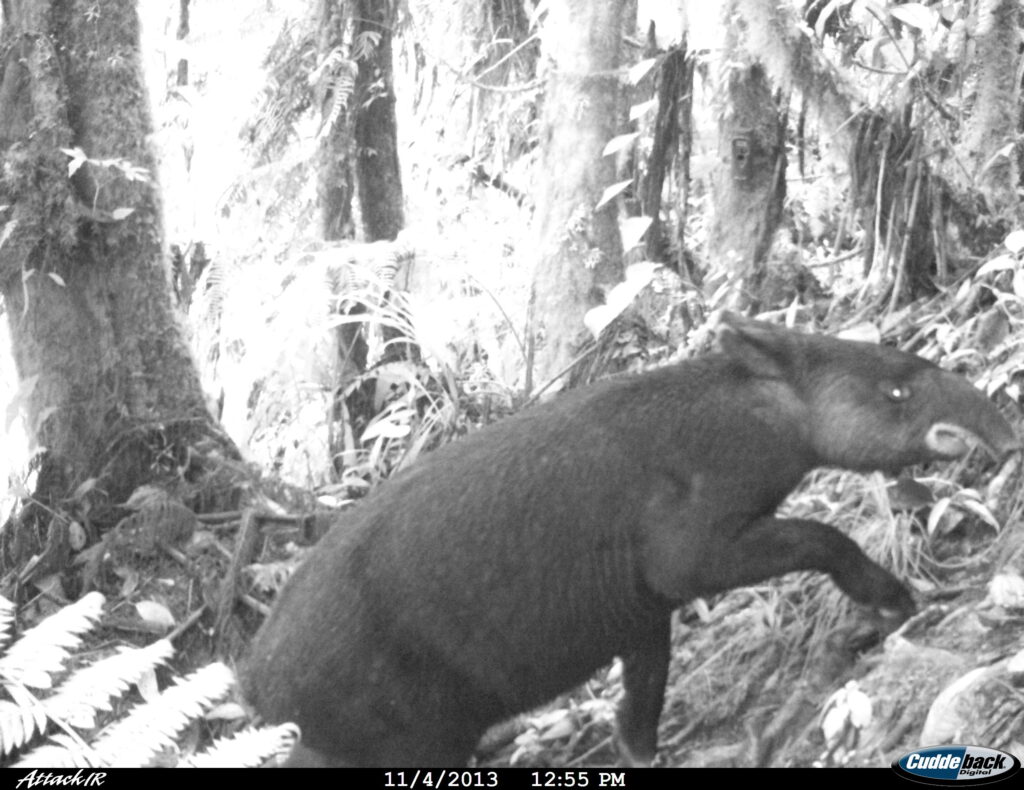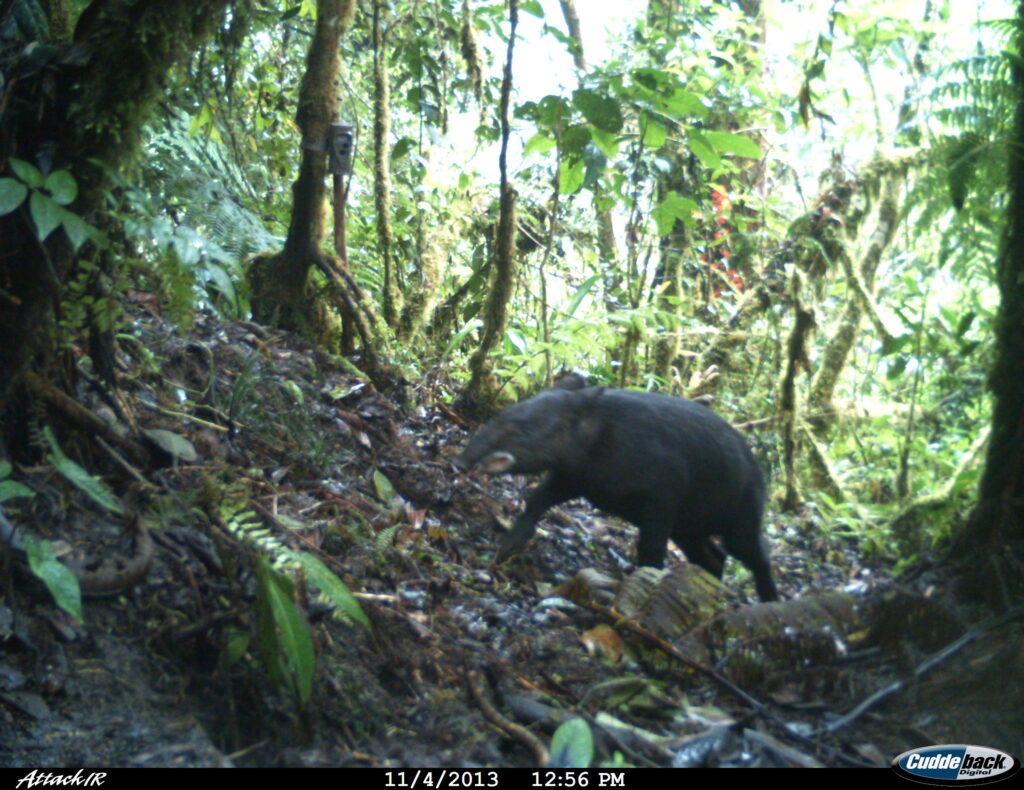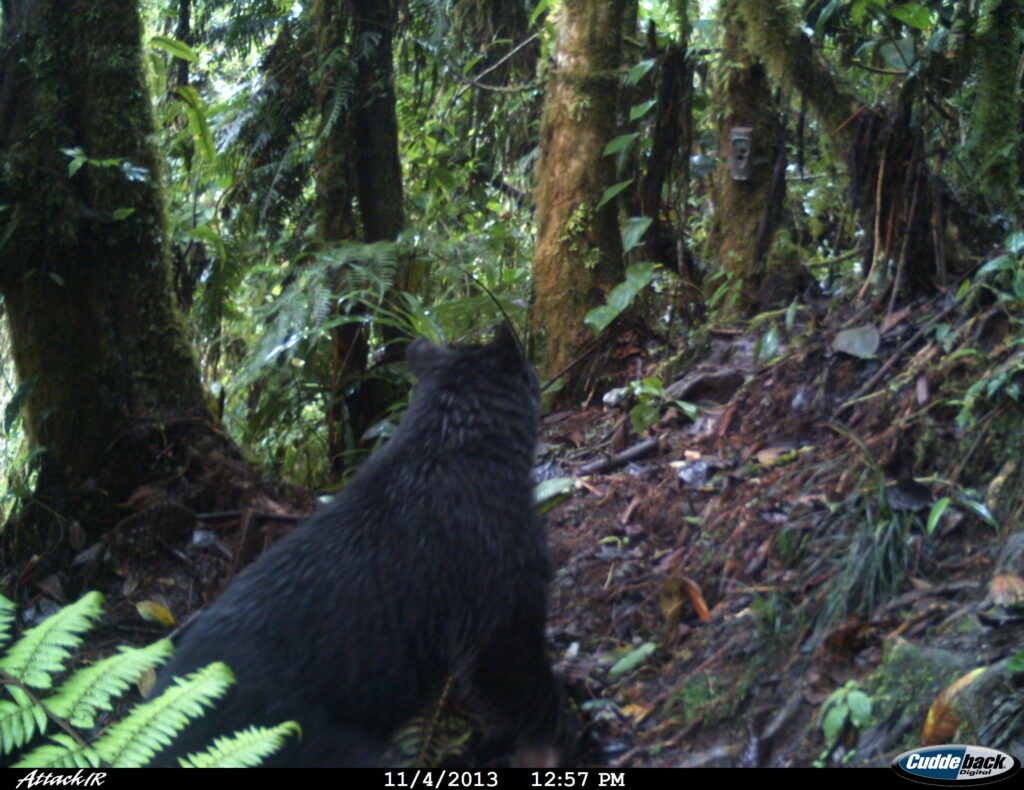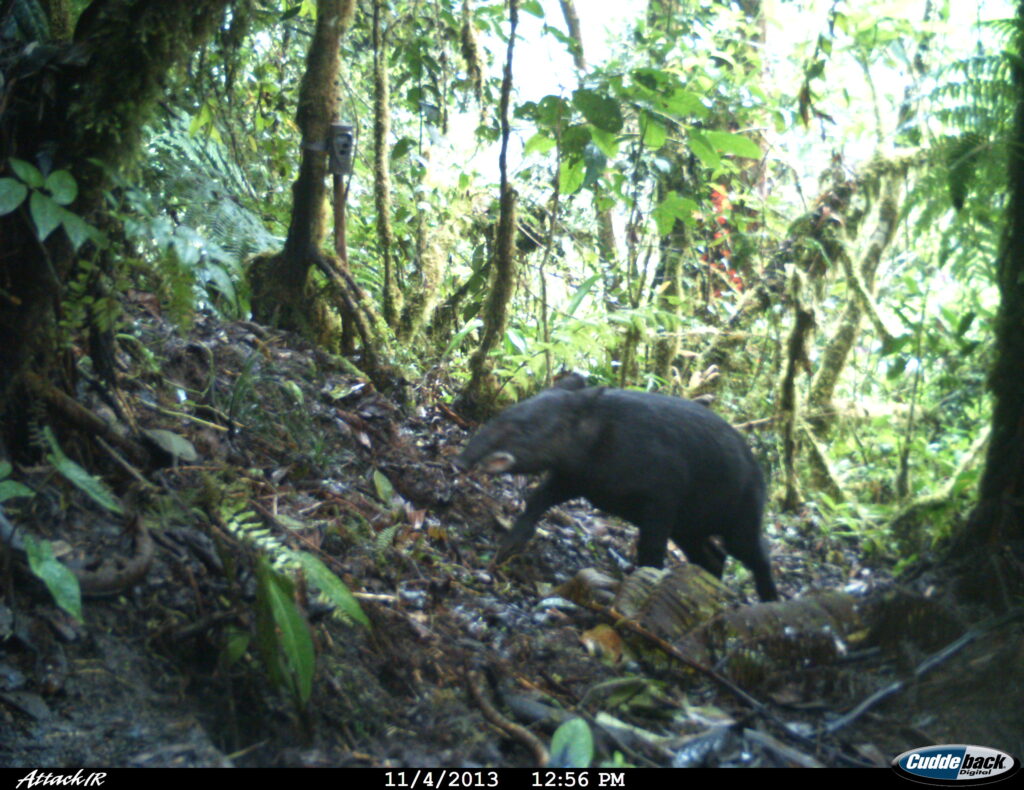In the framework of the Mountain Tapir Forever Project in Colombia, part of the work we carry out is focused on the collection and analysis of information, gathered in the past years by community monitoring groups through infrared cameras in the south of Huila Department. This work is in a sense a kind of data archaeology, where the first thing we try to do is to organize the images collected by date and determine their place of collection.
Unfortunately, the work done in the past did not employ a standardized collection method that would now allow us to do robust statistical analysis. However, we continue to explore the image banks trying to distill valuable information that surely exists there.
Recently, while we were classifying images from 2013, we were curious among the dozens of images of the mountain tapir, the appearance of an image of the Andean bear (Tremarctos ornatus), which was preceded by that of a tapir that, when crossing in front of the camera, seemed to be a little agitated and marching at full speed. When analyzing the date and time of these records, we observe that the bear passed in front of the camera barely a minute after the tapir, also showing a certain hurry. The analysis of four images that recorded the situation may suggest that the tapir was running away from the Andean bear.




The interesting thing about this record is that in early 2014, in the same area and just two months later, university researchers recorded the case of a possible Andean bear attack on a mountain tapir. The event was in fact reported in the news bulletin of the Tapir Specialist Group (TSG).
These findings may suggest that Andean bears actively pursue mountain tapirs, which may have important ecological implications, since in areas where there is an abundance of bears, mountain tapirs could be driven away.
This situation seems to be the case in some areas of the Guácharos-Puracé biological corridor, since in some cases the community monitoring groups report that only Andean bears and no mountain tapirs have been recorded in their sampling sites.
The negative interaction between tapirs and bears should therefore be taken into account when defining management actions for mountain tapir populations, since despite the fact that the management area proposed as a sanctuary for the species is observed as a compact block of forest, it could actually present discontinuities that are not evident when analyzing the structural connectivity of the landscape. In this sense, the presence of the Andean bear could interfere in the functional connectivity of mountain tapir populations, since the latter avoid areas with high density of Andean bears.
As part of our initiative, we have been exploring research topics that directly answer questions that allow us to guide the management actions to be implemented in the mountain tapir sanctuary in the Colombian Massif. The evaluation of the effect of the presence of a mountain tapir antagonist species on its movements and occupation of the territory is of great importance for the management and conservation of the species in the area.
Don’t forget to leave a comment, suggestion or criticism. Also, if you like our work and want to support our cause, you can make a donation or share our support us page https://mountaintapir.com/support-us/

